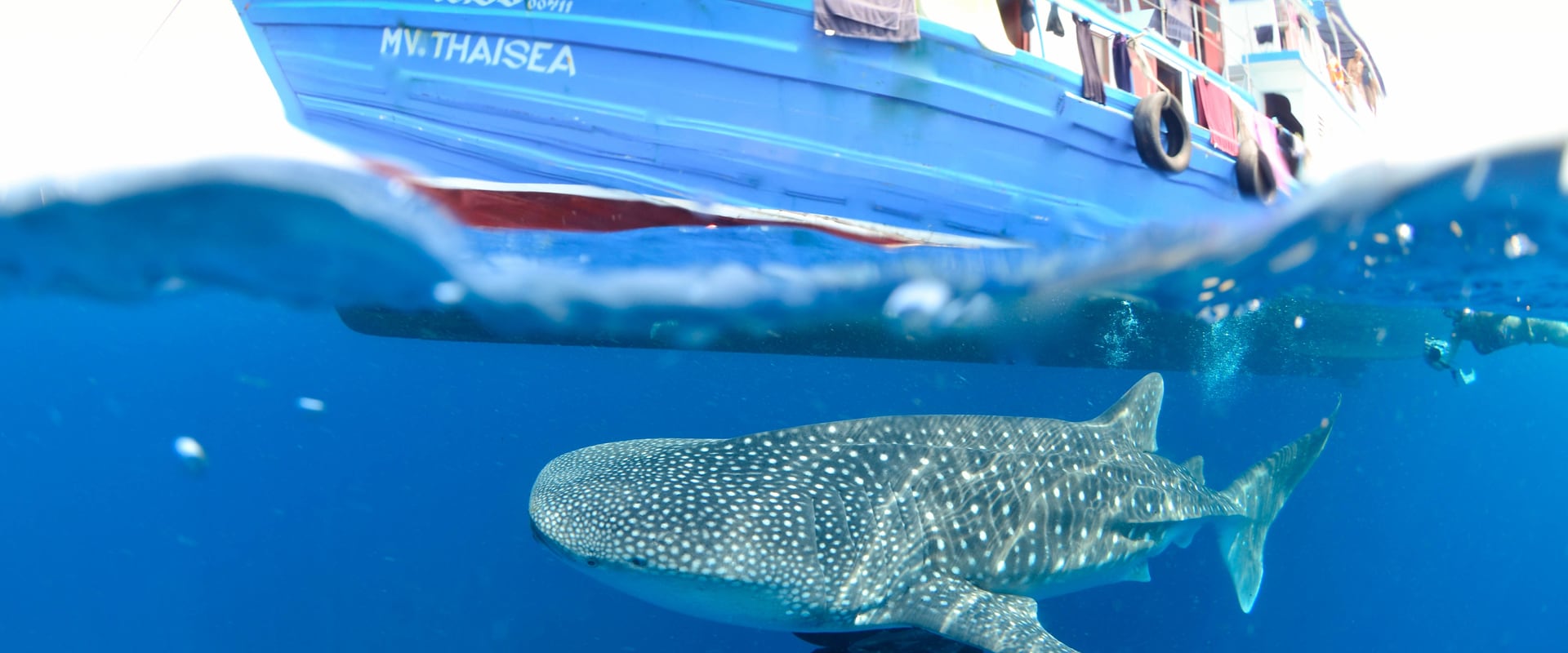Croisières plongée - Myanmar
Grâce à son écosystème marin riche, divers et inviolé, les passagers d'une croisière plongée en Birmanie auront le privilège de témoigner des spectacles les plus incroyables d'une région en grande partie inexplorée.
Les croisières plongée en Birmanie (Myanmar) sont encore très peu connues, mais de plus en plus de plongeurs s’intéressent à cette partie du monde encore vierge. Située en Asie du Sud-Est, entourée de la Thaïlande, l’Inde, le Bangladesh, la Chine et le Laos, la Birmanie (aussi connu sous le nom de Myanmar) abrite 51 millions d’habitants. Ses 1930 km de côte, s’étalant le long du Golfe du Bengale et de la mer d’Andaman, sont une des nouvelles destinations de plongée. La capitale est Naypyidaw, mais la plus grosse ville est Yangon (Rangoon).
Jusqu’il y a peu, la Birmanie était un pays où les étrangers ne pouvaient pas séjourner. Imaginez alors cette région totalement préservée où un monde sous-marin fabuleux s’offre à vous! De plus en plus de bateaux de croisière naviguent dans la région, donnant ainsi accès à des aventures sous-marines à peine ouvertes au grand public. N’attendez pas trop longtemps pour visiter ce pays encore authentique, peu fréquenté par les touristes ou les plongeurs!.
Plonger en croisière en Myanmar
À l’extrême sud de la Birmanie se trouve l’Archipel Mergui et ses magnifiques plages de sable blanc. Ces îles sont très peu accessibles par la route, et la seule option pour les découvrir est à bord d’un bateau de croisière. Profitez de centaines de sites de plongée sans aucun plongeur, loin du tourisme de masse de la Thaïlande voisine. Beaucoup de bateaux de croisière dans l’Archipel Mergui visitent le sud de la Birmanie et les îles Similan, explorant les Burma Banks et les meilleurs sites de l’archipel, comme Black Rock et Shark Cave, tombants, grottes et tunnels.
La distance à parcourir rend ces croisières de 4 à 7 nuits un peu plus chères que celles en Thaïlande. Certains sites sont profonds et la région est isolée, donc ces croisières conviennent aux plongeurs relativement expérimentés.
Les sites de plongées en Myanmar
Avec plus de 50 sites de plongée, une croisière au Myanmar offre un excellent rapport qualité-prix. Les forts courants et les conditions de surface parfois difficiles permettent aux plongeurs d’un niveau intermédiaire ou avancé de rencontrer de grandes et petites créatures. C’est aussi un lieu idéal pour la photographie sous-marine. La profondeur des sites varie entre 5 et 40 m, la visibilité entre 5 et 50 m et la température de l’eau entre 25 et 28°C.
Burma Banks est une série de monts sous-marins à sommet plat couverts de coraux durs et coraux table géants, et séparés par des zones sableuses.
Le site populaire de Black Rock est un petit îlot sauvage aux flancs abrupts. Place aux sensations fortes sur ses tombants où foisonnent les requins pointe blanche, longimanes et pointe noire.
Western Rock est un petit îlot rocheux offrant des plongées sensationnelles en grotte et sur tombant.
Meilleure période pour y plonger
La saison de plongée en Birmanie s’étend d’octobre à mai, mais les meilleures conditions de mer et de visibilité ont lieu entre décembre et avril. La température de l’eau varie entre 26°C et 30°C. Les requins-baleines et les raies mantas sont surtout observés entre février et mai.
Conseils aux voyageurs
La Birmanie est un pays encore très traditionnel, et il est important de respecter les coutumes, comme porter des vêtements couvrant épaules et genoux, éviter de parler de politique, tendre l’argent avec la main droite, ou ne pas pointer le pied vers quelque chose. Les pourboires ne sont pas attendus mais un sourire est toujours le bienvenu.
Il est recommandé de souscrire à une assurance médicale de plongée et de voyage, incluant une assurance annulation.
Les distributeurs de billets qui acceptent les cartes internationales sont de plus en plus répandus en Birmanie. Les banques KBZ et CB acceptent les cartes Visa et Mastercard, avec un coût supplémentaire de 5000 Kyats (environ 4$) à chaque transaction.
Depuis 2012, la Birmanie encourage les locaux et les visiteurs à utiliser la monnaie locale, le Kyat, mais il est conseillé d’emporter avec vous des petites coupures de dollars américains, au cas où vous seriez dans une zone où il n’y a pas de distributeur automatique ou de bureau de change. Les billets de dollars américains doivent être intacts et imprimés après 2006 pour pouvoir être échangés en monnaie locale. Il est aussi possible de changer des Baht thaïlandais à Yangon ou à Mandalay.
L’accès à internet s’est amélioré et est de plus en plus accessible dans les régions plus reculées, mais les coupures de courant sont fréquentes et le réseau instable.
Vérifiez les conseils aux voyageurs émis par le gouvernement de votre pays à propos des conflits, et informez-vous de la situation une fois sur place.
Il y a 6,5 heures de décalage (+6,5h GMT) en Birmanie par rapport à la France.
L’électricité est du 230V/50Hz. Plusieurs types de fiches sont utilisées, et il est recommandé d’emporter vos adaptateurs. Les bateaux de croisière sont généralement équipés de prises de type européennes ou américaines.
Comment s’y rendre - ports de départ
Les croisières plongée en Birmanie démarrent généralement du port de Ranong, en Thaïlande. La compagnie aérienne Bangkok Airways offre des vols directs de Bangkok à Ranong.
L’aéroport international de Yangon est le point de départ de nombreux vols intérieurs. Il est moins cher de réserver vos vols intérieurs une fois sur place, via Air Bagan ou Myanmar National Airlines. Il est possible de louer une voiture sur place via les hôtels ou petites agences à Yangon, Mandalay et Bagan.
Bon à savoir
Les prix des logements et hôtels en Birmanie ont fortement augmenté ces dernières années, mais restent encore abordables par rapport aux prix européens.
Les prix des croisières sont de l’ordre de 120 à 200 euros par personne et par nuit, ce qui n’inclut pas les taxes du Parc National (1600 Baht par personne), les taxes du gouvernement birman (entre 170 et 250 US$), la location du matériel de plongée, le Nitrox, les boissons alcoolisées et les cigarettes. Le niveau de plongée requis est l’Open Water.
Il n’est pas nécessaire de demander un visa touristique à l’avance si vous partez en safari plongée sur un bateau de croisière au départ de la Thaïlande, mais vous devrez réserver votre croisière au moins 10-14 jours à l’avance afin d’obtenir un permis (qui inclut un visa de 30 jours) pour visiter l’Archipel Mergui. Contactez l’ambassade de Birmanie sur http://www.myanmarembassy.com/english/visa.htm.
Myanmar Avis sur les plongées
- 8,3 Très bien
- 9,6 Exceptionnel
- Robert B
France
en gros , belles plongées avec des coraux magnifiques et de grands bancs de poissons , mais visibilité pas toujours très bonne .
Plonger Myanmar dans mars sur Deep Andaman Queen
- 6,8 Evaluation
- Pierre G
France
Décevante en raison de la très mauvaise visibilité qui ne nous a permis que d’entrevoir la beauté des site.
Plonger Myanmar dans février sur The Phinisi
- 8,4 Très bien
- Marion P
France
Globalement déçue par le manque de couleur (peu de soft corals) et la faible visibilité. Surtout le premier jour ce qui est dommage
Plonger Myanmar dans janvier sur The Phinisi
- 8,4 Très bien
- lee K
Etats-Unis
Une belle variété de vie marine accompagnée de personnes intéressantes et d’un équipage et de propriétaires compétents a également rendu le voyage très agréable. J’ai hâte de revenir plonger avec eux à nouveau
Plonger Myanmar dans mars sur Smiling Seahorse
- 10,0 Exceptionnel
- Jonah N
Allemagne
Le voyage à l’hippocampe souriant est définitivement à recommander !
Plonger Myanmar dans décembre sur Smiling Seahorse
- 8,8 Fabuleux
- Matteo A
Italie
Les procédures d’immigration sont un peu lourdes mais il n’y a aucun moyen, à l’heure actuelle, d’éviter la paperasse nécessaire.
Plonger Myanmar dans décembre sur Smiling Seahorse
- 8,0 Très bien
- Joerg L
Allemagne
Très bien je le répéterais
Plonger Myanmar dans mars sur The Phinisi
- 7,2 Bien
- Louise L
Canada
Mauvais, déconseillé aux autres clients
Plonger Myanmar dans février sur Bavaria
- 6,4 Evaluation
- Poul V
Danemark
De beaux sites de plongée - très similaires aussi aux sites de plongée autour des îles Andaman. Malheureusement, une très mauvaise visibilité gâche totalement l’expérience.
Plonger Myanmar dans février sur Bavaria
- 7,6 Bien
- Martin M
Danemark
Pas ce que j’avais espéré, mais toujours pas de regrets ! Je referais certainement le voyage avec le même bateau si l’eau s’éclaircit !
Plonger Myanmar dans février sur Bavaria











